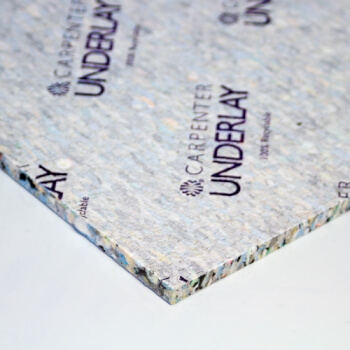A Christmas Tale - Saint Nicholas And The Carpet
By Jim (08/12/2017)
Hello everyone! It’s gotten very close to Christmas - we’re packing up in two weeks time and won’t be back until the 2nd of January 2018. But we still have blogs to do, and we’ve been wracking our brains for something suitably festive.
As it turns out, there just so happens to be a story of Saint Nicholas - the inspiration for the modern day Father Christmas (or Santa Claus, literally ‘Saint Niklaus’, or Kris Kringle, or Sinterklaas, or one his many other aliases) and carpet!
We should point out that this story really is about the Saint, rather than his modern counterparts - it’s also not technically set at Christmas, but on the Feast of St Nicholas (more on that later) but it’s the closest we could find.
So who exactly was this revered person, who has had such a huge impact on our culture?
The Historical Saint Nick
Like many Saints, very little is known of his life - he lived in the third century AD and was a Greek Bishop of Myra - modern day Demre in Turkey - where both a church and a bronze statue are dedicated to him.

Statue Of Saint Nicholas In Demre, Sculptor Necdet Can - Image Found On MaxPixel
NB: It is important to clarify, if you are speaking with a Chruch historian, that you are referring to Saint Nicholas of Myra, rather than the seven or eight other people called Saint Nicholas.
Sadly, no writings from of his own, or from his contemporaries about him, survive; the earliest documents we about him date from two hundred years after his death.
His name appears - on some versions at least - of the list of attendees for the famous First Council of Nicea (325AD), along with many others invited by the Roman Emperor Constantine.
Here, it is said, he slapped another bishop in the face over a disagreement about the Trinity - hardly the Saint Nick we have grown used to, and certainly not a guest we would want around for Christmas Dinner!

The First Council Of Nicea - Image Found On WikiPedia
But even this small fragment of his life story disputed - his reputation for generosity and selflessness is perpetuated, not through historical sources, but rather through oft-told stories which we might (at the risk of appearing skeptical) refer to as ‘folk tales’.
Another characteristic Saint Nicholas shares with other saints is that he wears many different hats (or mitres, if you like, since he was a bishop) - in addition to his gift-giving ways, he is the patron Saint of children, sailors, coopers (barrel makers), brewers, pawnbrokers, pharmacists, students and repentant thieves - and that’s not even the complete list!
He remains hugely popular within the Eastern Orthodox Church, particularly in Russia, and Russian Pilgrims often visit his tomb in Bari, Italy, to get their prayerclothes and and bibles blessed - you see, despite not having any writings from the Saint, his bones are very much still with us! You can read more about them here and here.
So, now we have unearthed (as it were) the ‘real’ Saint Nick, what is the story of the carpet?
St Nicholas And The Carpet
Well, it is a rather sweet tale - the two versions we have found take place in Constantinople (now Instanbul, as the song says) or in Patara - the first maybe the biggest and most famous city in Turkey, but the second is more historically likely, as it is often given as St Nicholas’ birthplace.
The tale concerns a family - or simply a couple - who were devout, dutiful and above all devoted to Saint Nicholas. They celebrated his feast day every year - which is on the 5th, 6th of 19th of December, depending on who you ask - with food, wine and merriment...
...sadly, this good family had fallen on hard times. Living in poverty, but still longing to do right by the Saint they loved, the father of the household took their last remaining valuable possession - a prized carpet - to the market to sell.
At the market the he was approached by a nobleman.
“What a fine carpet you have their, friend!” he said, of something of the kind “Surely you can’t mean to part with it?”
“I do, my lord,” the father replied “I am poor, and I wish to buy food and candles for the Saint’s feast, so I can celebrate with my family in proper fashion.”
“In that case, if you are so in need as to sell such a beautiful carpet, then I shall certainly help you - may I give you ten gold pieces for it?”
Well, the father had not expected this much, but willingly accepted the nobleman’s offer.
As he concluded his business and, with many thanks, bid the nobleman farewell, he noticed that other people in the market place were staring at him oddly - he paid no heed to them and instead went about the market buying all the needful things for the feast - even afterwards, he still had plenty of change from the ten gold pieces.
When he returned home, he found his wife looking forlorn, holding the very carpet he had sold earlier that day!
“I thought you said you sold this!” she wailed “Now how shall we celebrate the Saint’s day?”
With both carpet and money, there was no need for any more sadness, and they celebrated the feast, thankful and joyous at their good luck.
On the following day, the father set out to see if he could find the identity of the man who had so generously blessed his house - but when he enquired in the marketplace, everyone said they had seen no one - in fact, they had been confused when they saw him apparently standing alone, talking to thin air!
Both he and his wife considered the situation and came to the conclusion that the nobleman must have been Saint Nicholas himself - for though it seemed he was invisible to all but them, both money and carpet were real enough.
They vowed to keep the feast just as they had always done, and give thanks all year round for the generosity and kindness of their patron Saint.
In some versions of this tale, the husband and wife tell their miraculous tale to the Patriarch (Head Bishop), and are given a generous pension for their piety. Not a bad price for a carpet!
This is just one of the many stories surrounding this mysterious man and his penchant for gift-giving. And it is significant that the item in question is a carpet - we have already briefly covered on this blog how carpet was a symbol of wealth and power, and certainly a well-made carpet would have been valuable to a poor family - but it was also a symbol of holiness, both in the Christian and Muslim traditions.
There are several Medieval paintings in which Saints, Bishops, the Virgin Mary and the infant Christ are portrayed sitting or standing on fine carpet as a shorthand for their high moral character and spiritual superiority - we may well end up covering this in more depth in a future blog...who knows?
That's the end of story-time today - we hope you enjoyed this festive tale! And if you fancy giving the gift of carpet this year, we have now extended our pre-Christmas delivery deadline until the 17th - that’s right, you have a whole week left to order a carpet, remnant or bespoke rug to delight friends and well-wishers.
As always, any questions or issues, you can check our FAQ or contact us by phone or e-mail.
Enter your required size for our most accurate pricing and availability.










